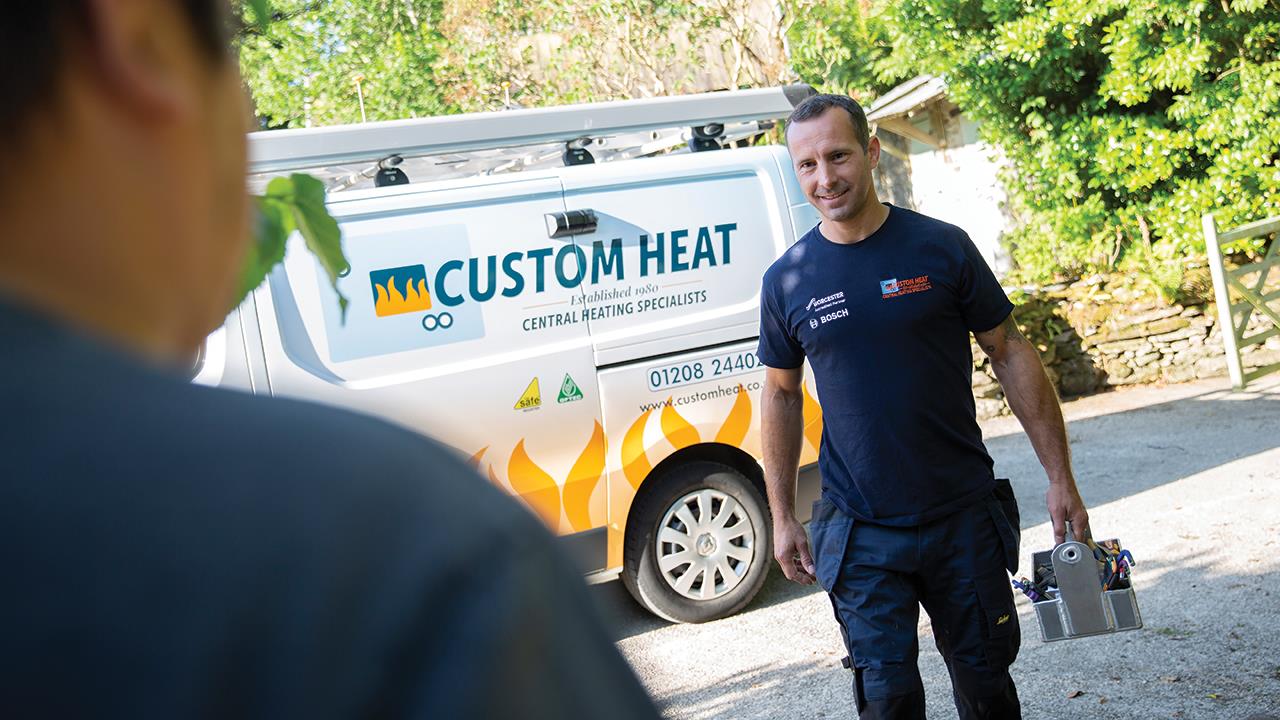

Having just announced our most successful year to date at Custom Heat, reaching a turnover of almost £5 million, it’s naturally got me thinking that I must have made some fairly good decisions along the way.
The challenges are very different today to when I took over the business from my dad 12 years ago, but the vision – instilled by him – has remained the same, and that’s to always look after the customer and do right by them.
While my ambitions to grow the company have been achieved through structural change, technologies, and building a brand, I would say having a ‘north star’ has helped the rest fall into place. Being professional, polite, helpful, and leaving a property spick and span at all times are our top rules, alongside offering our expertise and executing to perfection.
The first – and in many ways the simplest – change that I implemented, back in 2012, was to move away from the ‘everybody does everything’ structure. My dad did an amazing job, and we had a very loyal customer base, but it was very local and our processes were very much carried over from what customers wanted in the 80s and 90s – a totally different world.
I therefore employed a dedicated salesperson who could handle quotes, and we upped our admin game so we could complete a job end-to-end much more efficiently and faster; gone were the days of losing notes, having one engineer twiddling their fingers while another was flying round, or even forgetting to invoice occasionally.
Similarly, today, there are small companies out there that are operating with what worked 10 or even five years ago, and with the world changing faster than ever, to thrive means to keep up.
Therefore, my first piece of advice would be to have the right people doing the right tasks, whether this is organised by skillset or, when you have multiple engineers out in the field, geographically. Try to uncover what time and resource is being wasted (probably through no fault of your staff’s), in what area of the business, and what impact that is having on the customer.
As the business and I matured, this same principle led me to invest in technology; a move that benefits our customers, as well as our staff. I suppose I’m a bit of a geek at heart and had a natural interest in how technology creates efficiencies, gets rid of manual processes, and basically makes life easier for everyone.
The 2010s were the decade of cloud computing, so when I was ready to push forward with long-term growth plans in 2016, we adopted the Commusoft solution.
Whether in the office or on the road, and whatever their role, my team can access the details they need. The system also automates numerous tasks – such as assigning the nearest engineer to a job, confirmation emails, and invoicing electronically – and it’s also integrated with stock, suppliers, and company financials.
This was a big step in not only trimming waste and allowing me to spot opportunities for growth, but it helped to give customers a simple and seamless experience. Technology can elevate a business, but I’d say integrated technology transforms it.
We were working hard to expand and got our ducks in a row behind the scenes to facilitate this, but I knew our brand and marketing output had to match our ambitions, in order to attract new customers, particularly in new locations across the Midlands. Therefore, we rebranded, dressed our vehicles with an eye-catching livery, and focused on having a presence where our prospective customers were – in Google search results, not in the phone book!
And, beyond that, once our customers had found us and visited our website, we focused on giving them what they wanted – a chat feature and an online booking function. Already, just a handful of years on – obviously fuelled by the pandemic – that’s what many customers now expect.
We spent time and money in ensuring we could serve customers quickly, the way they wanted, to ensure they were happy, so it was also very important to harness the potentials of that loyalty and advocacy, and not just rely on word of mouth.
We encourage customers to leave us a review on Trustpilot or Google, and that has been instrumental in finding new business – at the time of writing we have 1,409 comments on Trustpilot, with a score of 4.9 out of 5.
Any one-man-band or small company reading this may be thinking ‘this all sounds expensive’, and they’d be right; this hasn’t been an insignificant investment, but I can assure you much homework and forecasting was done in line with our aims.
You don’t have to spend a lot of money, but if your ambition is growth, there’s a bigger cost to the business if you neglect the marketing basics.
Have a website that works properly on mobile devices, maybe promote a WhatsApp number for quick queries and availability questions if a chatbot isn’t possible, and showcase the jobs you’ve completed, as well as what your customers say about you.
In terms of business software, there are lots of cost effective, entry level options available, but make sure the solution or solutions you select are scalable.
As for tweaking your team structure, you need to work out where the bottlenecks are and I’d suggest there’s no better place to start than asking your employees how they think things could improve. No matter what you do, however, never take your eye off the ball when it comes to understanding your customers.
If you'd like to keep up-to-date with the latest developments in the heating and plumbing industry, why not subscribe to our weekly newsletters? Just click the button below and you can ensure all the latest industry news and new product information lands in your inbox every week.